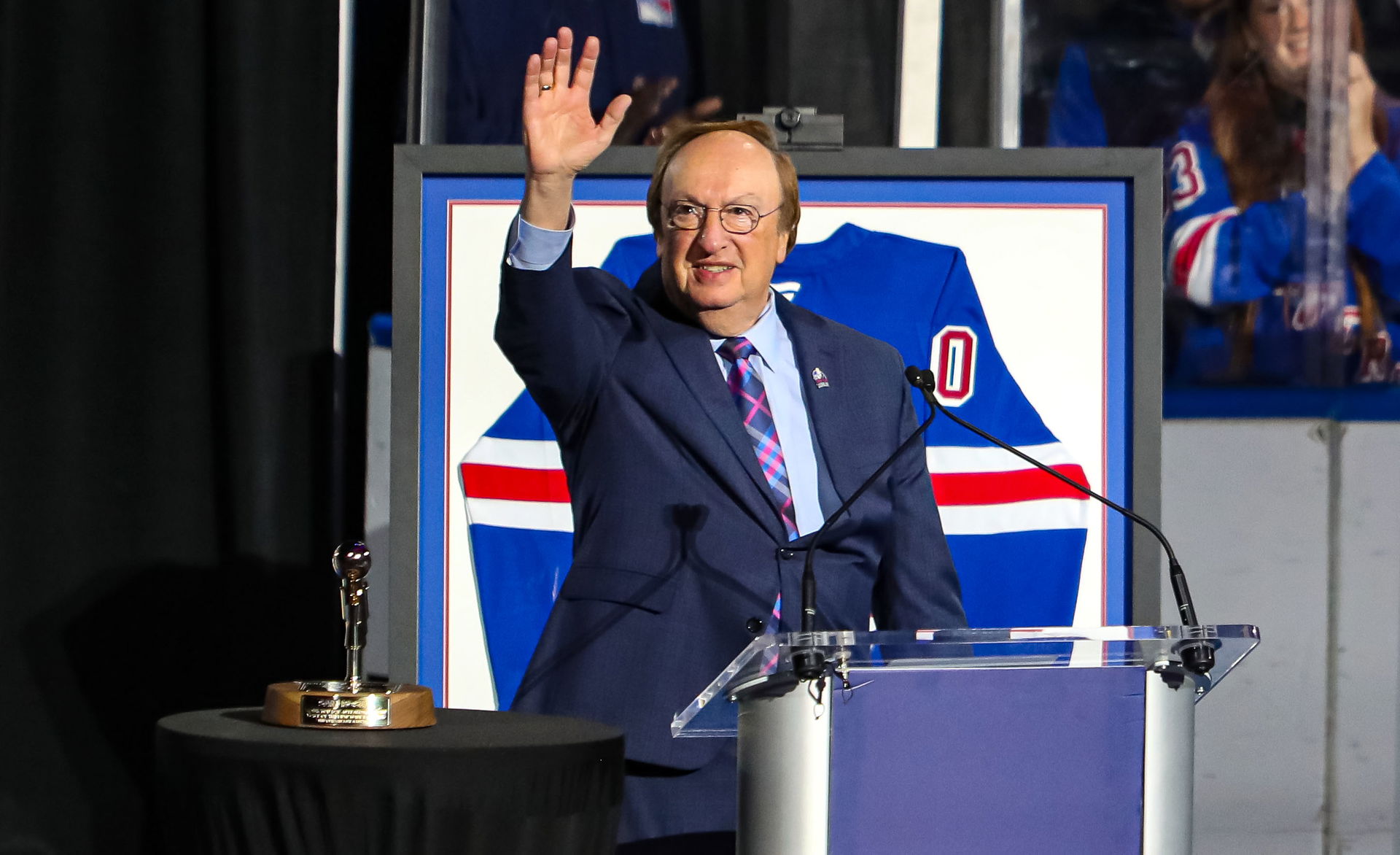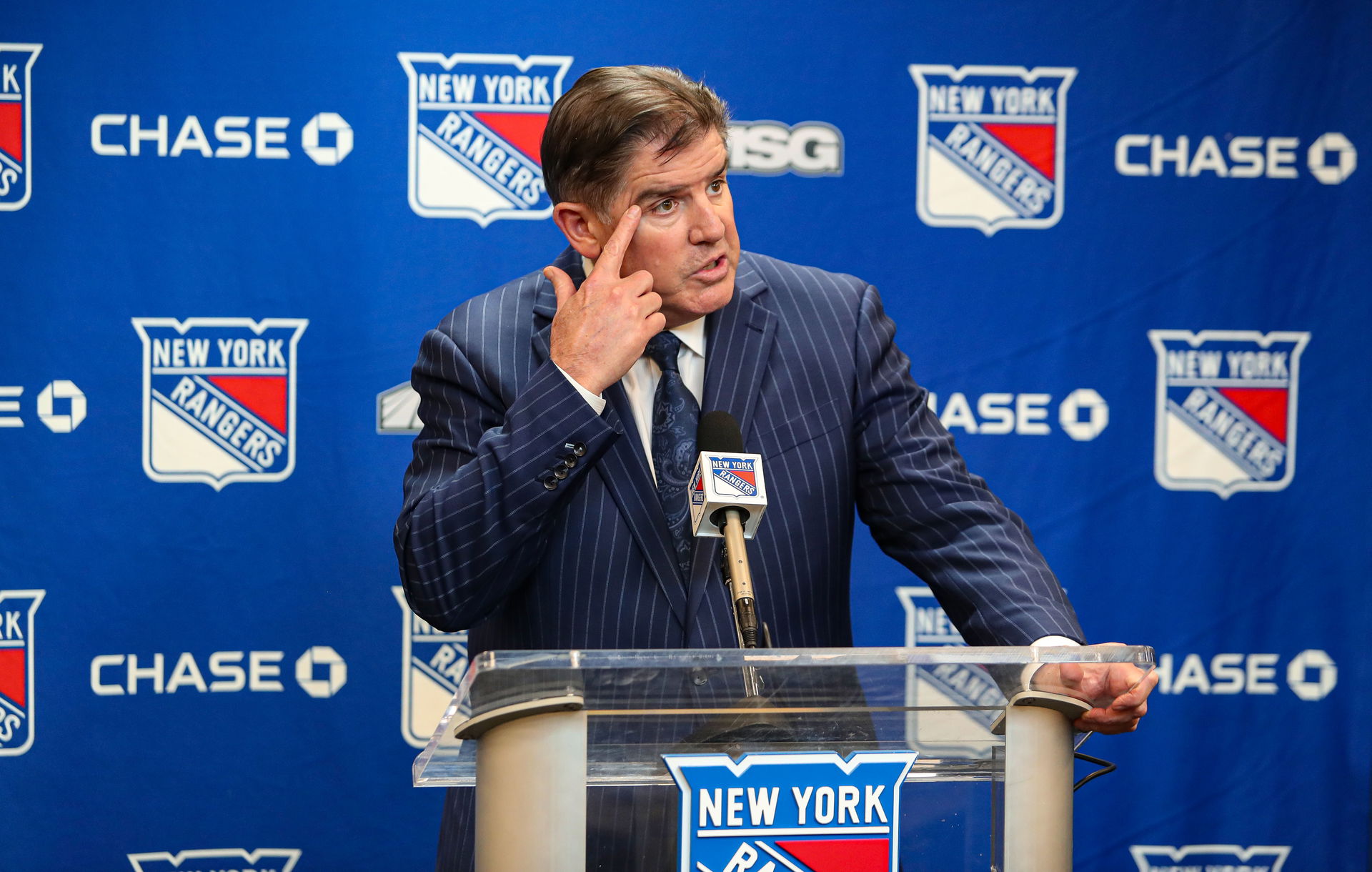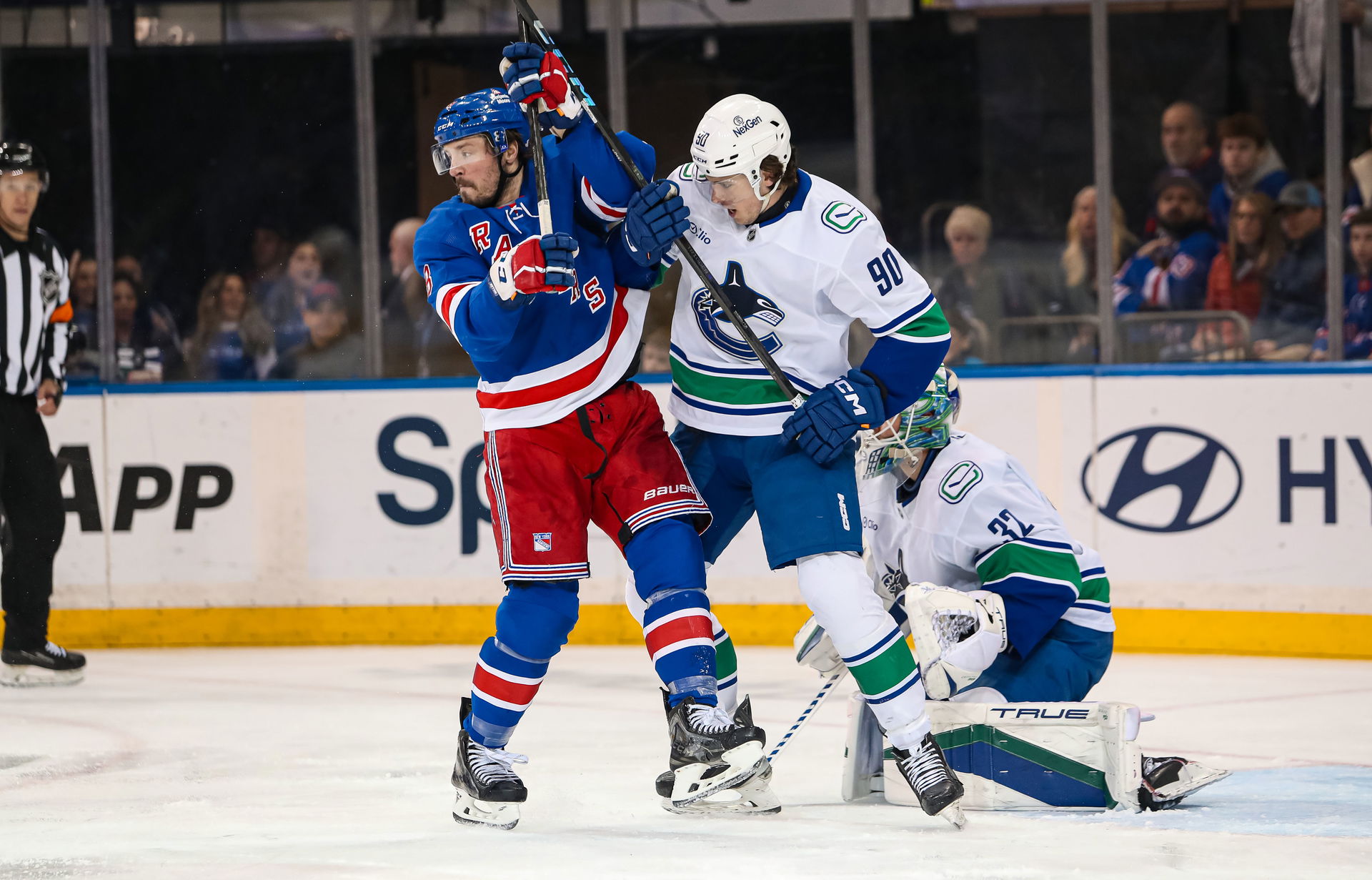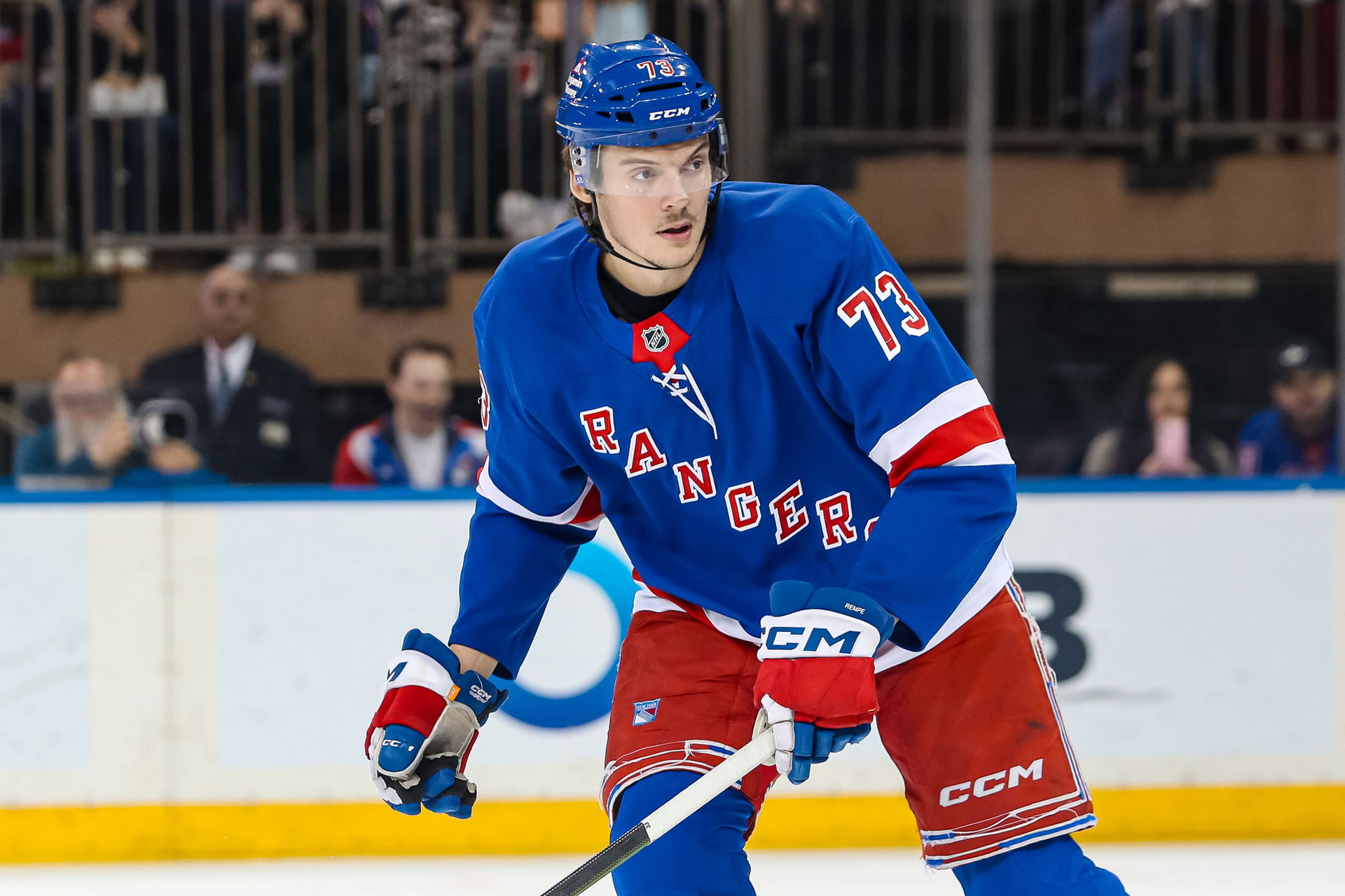
Rangers 101: A Rich History of Goalkeepers
A comprehensive and chronological resource of the New York Rangers goaltending history.
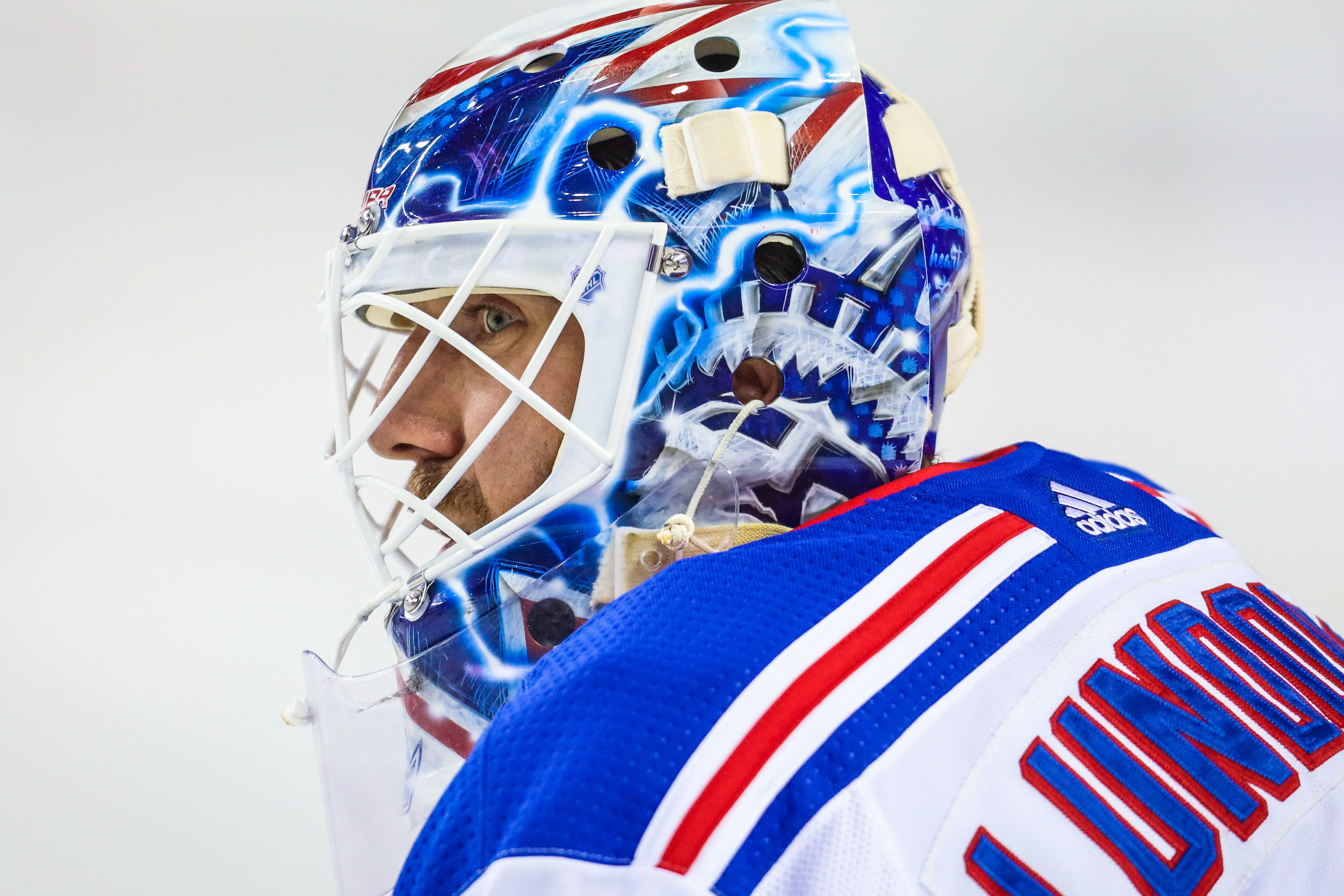 © Sergei Belski-USA TODAY Sports - Rangers 101: A Rich History of Goalkeepers
© Sergei Belski-USA TODAY Sports - Rangers 101: A Rich History of GoalkeepersThe New York Ranger's rich history of goaltending has kept the organization a competitive club for nearly a century. From the dawn of the New York Rangers hockey team, the blue paint has been tended to by a plethora of hockey all-time performers. The following is a comprehensive, chronological resource on the New York Ranger's goaltending history.
Lorne Chabot (1926-1928):
Chabot won the first New York Rangers Stanely Cup championship in 1928 and defeated the Rangers as a Maple Leaf to win a second championship in 1932. Chabot played in the two longest games in NHL history for the Toronto Maple Leafs in 1932-1933 and for the Montreal Maroons in 1935-1936.
John Ross-Roach (1928-1932/ Andy Aitkenhead (1932-1935):
“Little Napolean”, “The Port Perry Cucumber”, or “The House Cleaner” legally named John Ross Roach, was one of six goalkeepers to captain a team and did so for the Toronto St. Patricks during the 1924-1925 season. Ross-Roach lead the Rangers to the Stanley Cup Final twice in his career but the net was taken over by Andy Aitkenhead in 1933.
A Scottish native, Andy Aitkenhead posted a shutout in the Rangers Stanley Cup-clinching victory. He backstopped the club to its second championship in overtime over the Toronto Maple Leafs. Players such as “The Bread Line” of Frank Boucher and Bill and Bun Cook, Eddie Shore, Tiny Thompson, Dit Clapper, Busher Jackson, and Hooley Smith were at the top of their games in 1933, 90 years ago.
Dave Kerr (1934-1941):
Kerr won the Vezina Trophy in 1940, lead the league in goals allowed, and had a 19-game unbeaten streak. He only missed a single match as a New York Ranger from 1934 to 1941. He was the second hockey player to be on the cover of Time magazine, his image was used in the March 14th, 1938 issue. Kerr is considered one of the Ranger's great goaltenders, one of four men who played in net to win a league championship for the Manhattan based hockey team.
Ken McAuley (1943-1945)
Experiencing a shortage of players because of the second world war, McAuley was signed by the Rangers and played two years with the club. He is widely regarded as one of the worst goaltenders in the history of the game, posting a 17-64-15 record in New York. He also posted the worst goals-against average of all time in 1943-1944, allowing 6.24 goals per game.
Chuck Rayner (1945-1953)
Rayner is credited as the first goalie to play the puck with passes to teammates skating up the ice. “Bonnie Prince Charlie” went on a phenomenal run from 1948 to 1951 where he was awarded the Hart Trophy as league MVP in 1950. That same year the Rangers lost to the Detroit Red Wings in game seven overtime, Rayner surrendering the dagger to Pete Babando.
Lorne “Gump” Worsley (1952-1963):
The nickname “Gump” came from friends who thought Worsley looked like the comic strip character Andy Gump. While in the juniors, Worsely was a great soccer center and played for football clubs up until he began starting in the net at Madison Square Garden. His father won the Canadian championship in 1919 with the Montreal Grand Trunk. From the mid-1950s into the early 1960s, Worsley played the net well for underperforming Ranger teams. He won the Calder in 1952 and took the net from Johnny Bower. Worsely would be traded to the Montreal Canadiens where he would go on to win 4 championships.
Johnny Bower (1953-1954, 1956-1957, Jacques Plante (1963-1965):
Bower was called up by the Rangers and performed well, but Gump Worsely won the net back from the young netminder. Bower returned to the minor leagues and was claimed by the Maple Leafs, winning 4 Stanley Cup championships soon after.
The famed inventor of the goalie mask Jacques Plante was traded to New York in exchange for Gump Worsley on June 4th, 1963 following tension in Montreal and a desire for change. He recorded 32 wins in two seasons as a Rangers and did not play a post-season game in the blue sweater.
Terry Sawchuck (1969-1970)
Sawchuck only played in New York for one season. Sawchuck left a complex legacy, his performances on the ice led to many honors, but alcoholism consumed his life. He struggled with depression and was physically and verbally abusive. He passed away when he got into an altercation over expenses for a rented house with Ranger teammate Ron Stewart. He passed away from his wounds at 40 years old.
Eddie Giacomin (1965-1976)
No New York Ranger will ever wear #1 again. Eddie Giacomin worked his way into starting for the Rangers and rose to stardom, splitting the Vezina Trophy with Gilles Villemure in 1971, and leading the club to the 1972 Stanley Cup Final. He ranks 25th all-time in career wins by a goaltender and 19th in career shutouts. Eddie was so famous in the city that never sleeps that when he returned to New York as a Detroit Red Wing, the fans were so irate at management about his departure that they cheered for Eddie rather than the Broadway Blueshirts. He won the game and the famous “Eddie, Eddie” chants engulfed Madison Square Garden.
Gilles Villemure (1970-1975)
Backing up Giacaomin, Villemure was a remarkable goaltender for the Rangers in the 1970s. The Quebec native recorded the lowest goals-against average in All-Star game history in 1971 and recorded ten shutouts in the Ranger's powerhouse years. Villemure took over the crease from Eddie in 1975 as the tandem aged, and he was traded to Chicago shortly after.
John Davidson ( 1977-1983, 2019-2021)
“JD" lead a very different team to the Stanley Cup in 1979 just 7 years after Giacomin lead the club to the final in 1972. John Davidson at one time wore the number "00”, now banned by the NHL, and inspired the band Foreigner to create the song Double Vision. Hit by a puck in the mask, Jim Gordon and Bill Chadwick claimed JD was experiencing “double vision”. The band was a fan of the Rangers and named their 1978 album based on that commentary. Davidson was famous for his color commentary with Sam Rosen in subsequent years with his famous “Oh baby” phrase. He was the Rangers president from 2019 to 2021, initiating the team's rebuild, and is currently the president of the Columbus Blue Jackets.
Glen Hanlon (1982-1986) /Eddie Mio (1981-1983):
Hanlon played for the Rangers from 1982-1986. He is best known for his playoff series against the New York Islanders in 1984, where the Rangers fell to their rivals in a five-game series.
Eddie Mio played for the Rangers and split time with Hanlon, and eventually finished his career in Detroit. Mio previously played for the WHA Oilers and is the reason Wayne Gretzky was traded from the Indianapolis Racers to the eventual NHL team. He was “The Great One”s best man in his wedding to Janet Jones.
John Vanbiebsrouck (1983-1993):
Vanbiesbrouck returned the Rangers goaltending to prominence. “Beezer” recorded the second-most victories all-time by an American-born goaltender, and the most assists in club history by a goaltender with 25. He was awarded the Vezina Trophy in 1986. Vanbiesbrouck, like many of the Ranger's past goaltenders, suffered off of the ice. His brother Frank, who “JVB” largely credits learning his netminding skills from, suffered from severe depression. Vanbiesbrouck traveled separately from the team to help his brother, but Frank passed away in 1993. Beezer would be traded to the Florida Panthers, where he led the franchise to its first Stanley Cup final appearance in 1996.
Mike Richter (1989-2003)
Richter took over the crease in 1994, playing in the all-star game at Madison Square Garden and dominating the playoffs en route to a Stanley Cup victory. His athleticism and acrobatics lead to sensational performances, the most famous moment of his career featured in the championship series. The Hall of Fame goaltender stopped Pavel Bure on a penalty shot, widely considered one of the best saves in franchise history. Richters jersey was retired in 2008, Richter is considered one of the best New York Rangers in its 97-year history.
Henrik Lundqvist (2005-2020):
“The King” is one of the most historic players in league history, and continued the legacy of supreme goaltending in the big apple. He was selected 205th overall in the 2000 NHL draft and arrived in New York in 2005. He played his entire 15-year career as a Ranger, dragging the team back to competitive play following a dreadful 2000s decade. Lundqvist would go on to win the Vezina in 2012, never lose an outdoor game, record a legendary 6-2-0 record in game 7 appearances, and lead the Rangers in 15 team records. He is the Ranger's all-time leader in wins with 459 victories, good for 6th in the entire league's history. Not only was he an all-time performer on the ice, Lundqvist was a rock star in the city. His fashion, guitar play, podcast, and studio analysis have thrust Lundqvist into the spotlight. Lundqvist was a first-ballot Hall of Fame candidate the first year he became eligible and will have his name enshrined this November.
Igor Shesterkin (2020-present):
The heir to the throne has already established himself as one of the league's premier goaltenders. Shesterkin was part of a three-goaltender rotation with Henrik Lundqvist and Alexander Georgiev in 2020. He took over the crease in February 2020, but the pandemic stopped the Ranger's momentum. As 2021 came and went, “Shesty” earned the Vezina Trophy and lead the club to its first Eastern Conference finals appearance since 2015 in his first full-length NHL season.


